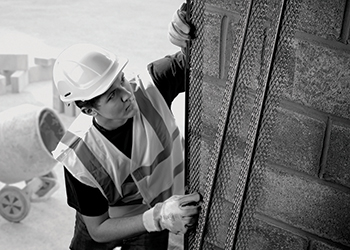
Researchers at the UK’s Nottingham Trent University have developed innovative technology that can detect cracks in buildings which cannot otherwise be seen, thus helping avert any emerging structural damage following catastrophic events.
Using the natural frequencies which occur when concrete vibrates, civil engineers at the university’s School of Architecture, Design and the Built Environment have devised a way to calculate where unseen cracks appear in concrete to allow for speedier remedial action.
“It’s imperative that the structural health of a building is monitored thoroughly following damage from a disaster such as a major explosion or an earthquake,” says Mezgeen Ahmed, a postgraduate student who is working on the research at the university.
“But until now a lot of investigations have had to be invasive, meaning that further damage may be caused to a building when accessing the parts which are out of view.
“What this technology can give us is the ability to analyse a whole structure by simply attaching sensors to it, which not only does away with the risk of causing further damage but also which creates greater efficiency in repair work.”
The technology centres on attaching a number of accelerometers to the structure’s surface which measure its natural vibration frequency and then analyses this via computer.
These frequencies – which are created with an impact hammer that provides a precise amount of force – are then checked for any irregularities which illustrate where the damage might be.
As each building will have its own natural frequency, an undamaged part is analysed first in order to provide a blueprint as to how it should behave when subjected to the forces of the impact hammer.
As well as being used on potentially damaged buildings, the technology can be applied to other concrete structures such as bridges and dams as part of their ongoing monitoring.
Fouad Mohammad, a senior lecturer in civil engineering, who supervised the study, says: “This technology has the potential to become key for engineers around the world as it will allow for earlier remedial action before any minor damages become significant.
“And as well as being used to analyse damaged buildings, it can monitor the health of other concrete structures such as bridges, which are subjected to a range of forces that can damage their health over time.”





















_0001.jpg)


.jpg)
















.jpg)








.jpg)




